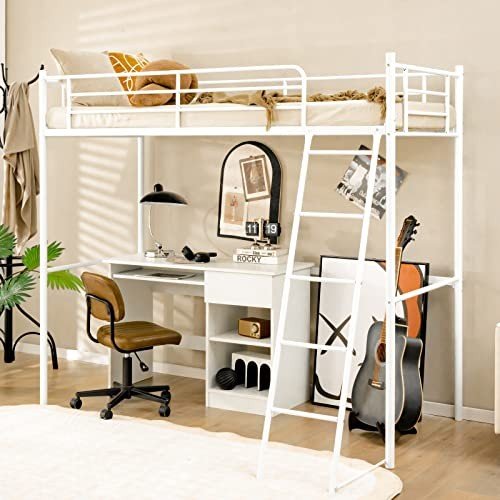kids_bunk_beds1017
About kids_bunk_beds1017
9 . What Your Parents Taught You About Bunk Bed For Kids
The Ultimate Guide to Bunk Beds for Kids: Safety, Styles, and Solutions
Bunk beds have long been a popular choice among moms and dads seeking to enhance space in their kids’s bed rooms. With benefits that go beyond their compact style, bunk beds offer an enjoyable and practical sleeping arrangement while encouraging brother or sister bonding and cultivating creativity. In this extensive guide, we check out various elements of bunk beds for kids, including security factors to consider, various designs available, and recommendations for picking the best one for your family.
Why Choose Bunk Beds?
Bunk beds are created to stack one bed on top of another, making use of vertical space to create more room for play and storage. They are especially advantageous for households with multiple children or limited bedroom space. Additionally, they offer a daring sleeping environment that children typically take pleasure in.
Key Advantages of Bunk Beds:
- Space-saving design: Ideal for little spaces or shared areas.
- Affordable: Often more budget-friendly than buying 2 different beds.
- Motivates social interaction: Promotes bonding among brother or sisters or friends.
- Versatile choices: Available in numerous styles and configurations to suit any room style.
Security First: Essential Considerations
When picking a bunk bed for kids, security must be the leading concern. The following features are crucial for making sure a safe and secure sleeping environment:
Important Safety Features:
- Sturdy Construction: Ensure that the bed frame is made of resilient products such as strong wood or metal.
- Guardrails: Bunk beds should have guardrails on both sides of the upper bunk to prevent falls.
- Ladder Safety: A durable, built-in ladder or stairs with anti-slip rungs is essential for safe access to the top bunk.
- Weight Limit: Check the producer’s weight limitation capability for both the top and bottom bunk.
- Bed mattress Size: Use the correct mattress size as specified by the bed manufacturer to make sure a snug fit within the bed frame.
Safety Tips for Parents:
- Monitor Sleep Habits: Teach kids the significance of not playing on or jumping off the bunk beds.
- Age Appropriateness: Generally, the upper bunk is ideal for children aged 6 and older.
- Routine Inspections: Periodically look for any loose bolts, screws, or structural damage.
Styles of Bunk Beds
Bunk beds come in a variety of designs, enabling parents to pick one that matches their child’s space design while meeting particular requirements. Below are some popular designs:
Popular Bunk Bed Styles:
- Traditional Bunk Beds: Simple and timeless designs made from wood or metal with no additional functions.
- Loft Beds: Features a raised leading bunk with space below for a desk, play location, or additional storage.
- L-Shaped Bunk Beds: Arranged in an L-shape, often ideal for corner spaces and can have extra storage alternatives.
- Twin over Full Bunk Beds: A twin bed on leading and a larger full-sized bed on the bottom, accommodating children or teens of various ages.
- Triple Bunk Beds: Designed to fit 3 beds in a single footprint, suitable for bigger households or pajama parties.
A Comparison of Bunk Bed Styles
| Bunk Bed Style | Description | Best For |
|---|---|---|
| Conventional | Traditional style with 2 stacked beds | Requirement bedroom setups |
| Loft Bed | Raised bed with usable space underneath | Research or play locations |
| L-Shaped | Bunk beds organized in an L-shape | Corner areas |
| Twin over Full | Twin bed on top, complete bed below | Various age siblings |
| Triple Bunk | 3 stacked beds | Big households or sleepovers |
Selecting the Right Bunk Bed
When looking for the perfect bunk bed, think about the list below aspects to guarantee you make a notified decision:

Key Factors to Consider:
- Room Size: Measure the space dimensions to determine the proper size and height of the bunk bed.
- Child’s Age: Consider the age of your child(ren) when selecting a design and safety functions.
- Functionality: Think about how much storage or play space you require and whether the bunk bed must serve additional functions.
- Spending plan: Set a spending plan that consists of not only the bunk bed however also the required mattress and accessories like bedding or security gates.
FAQs About Bunk Beds for Kids
1. What age is suitable for a kid to oversleep the top bunk?
Typically, children aged 6 and older must have the ability to safely oversleep the leading bunk, though you need to always consider your kid’s maturity level.
2. Are bunk beds safe for young children?
It is not a good idea for toddlers or really kids to sleep in the top bunk due to the risk of falling.
3. How do I maintain the bunk bed?
Examine the bed frequently for any indications of wear and tear, tightening up screws, and cleaning the mattresses to ensure prolonged safety and resilience.
4. Can I convert a bunk bed into 2 separate beds?
Lots of bunk beds are designed to be convertible, allowing you to separate the beds when required. Inspect the manufacturer’s requirements before purchasing.
5. How can I optimize space in a bunk bed room?
Make use of under-bed drawers, racks, or lofted designs to develop additional storage solutions in a space with a bunk bed.
Bunk beds offer a wonderful blend of enjoyable, performance, and space-saving utility, making them a perfect option for young families. By thinking about safety features, numerous styles, and useful factors such as space size and age suitability, parents can choose the perfect bunk bed for their child’s needs. With the ideal choice, bunk beds can change a bed room into a wonderful space that encourages play, imagination, and bonding amongst siblings. Always keep in mind to prioritize security and maintenance to take advantage of this special sleeping plan.
No listing found.